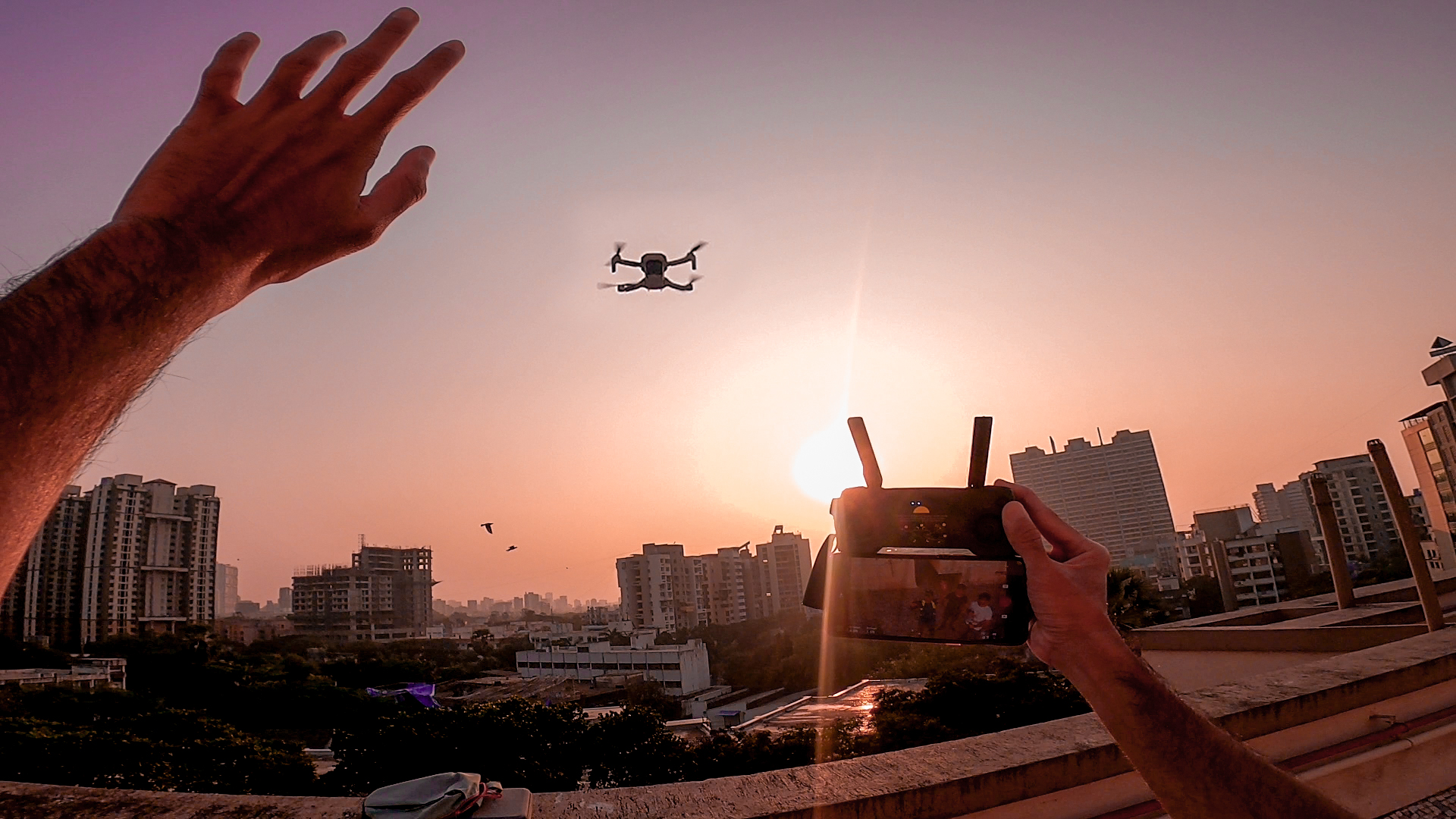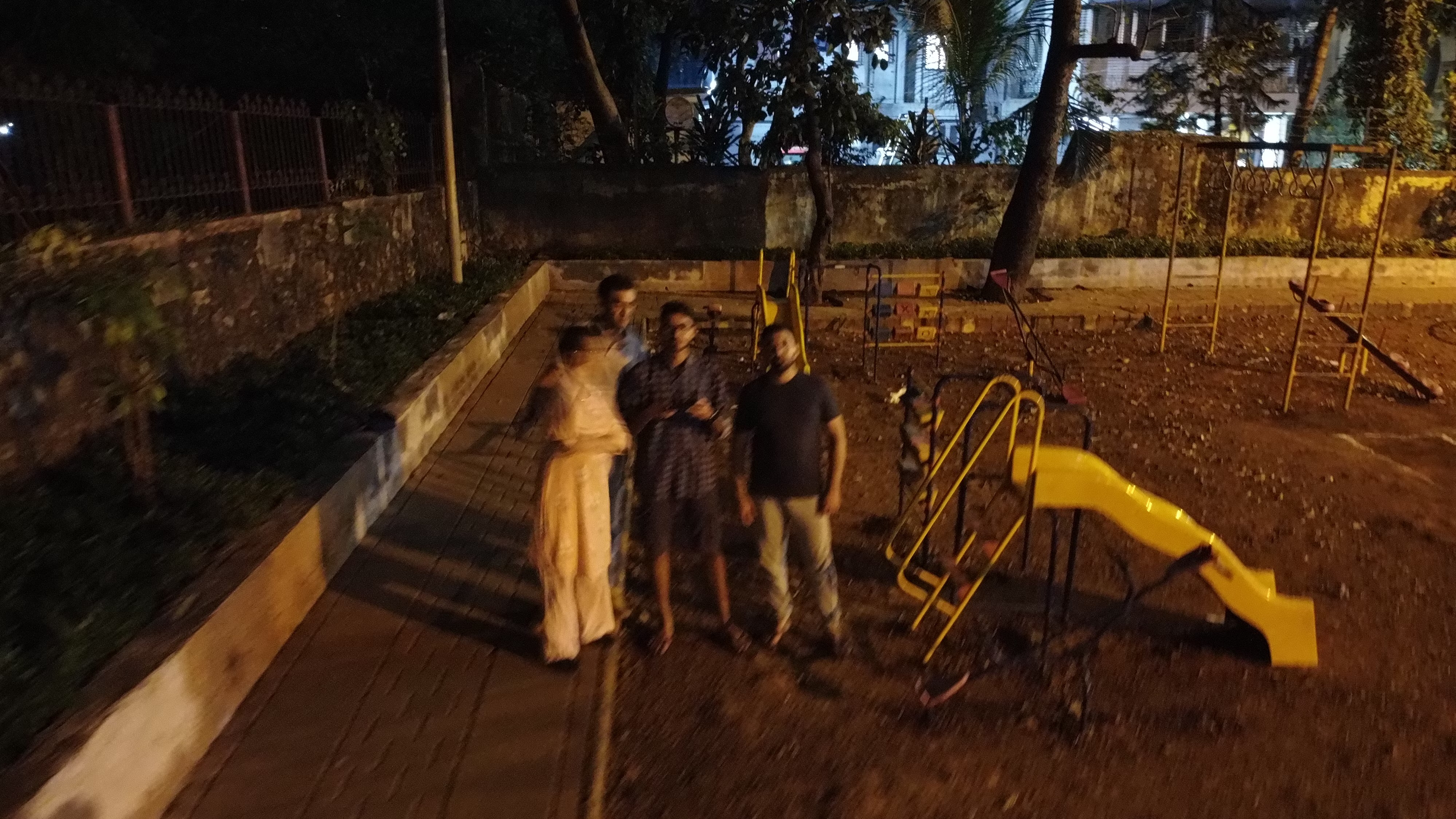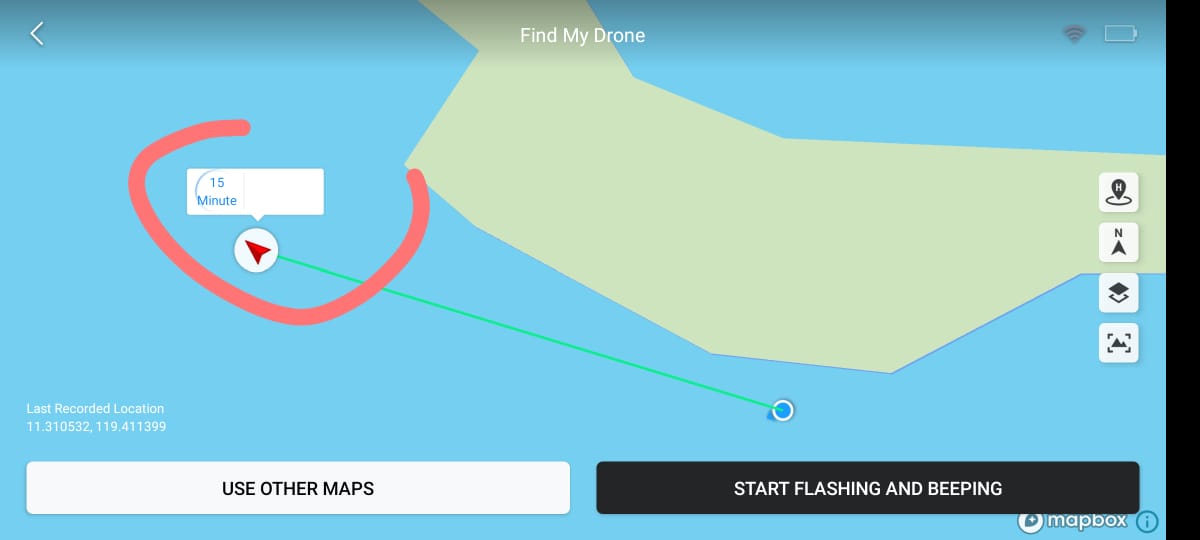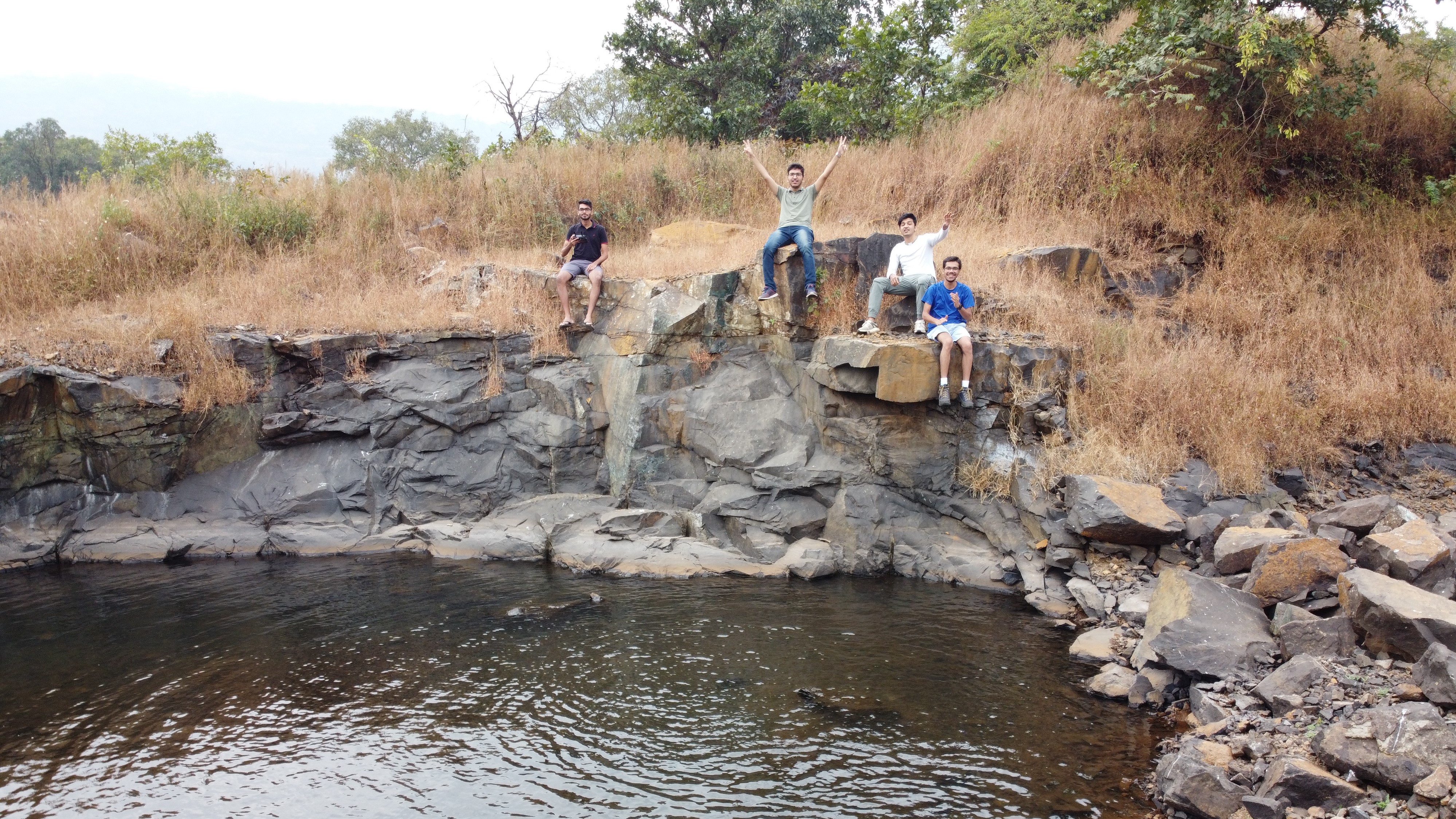I didn't get why some people called the DJI Mavic Mini incapable, until mine flew away
Don't ignore the warnings

As tech aficionados, there are quite a few lessons we learn the hard way — always taking backups of media, never writing a story directly in the CMS, trying to restore WhatsApp backups over an unreliable connection or how not to push a tiny drone to its limits. We’ve all been there more times than we’d like to admit.
But if you think about it, none of these lessons were totally unknown or far fetched. In fact, we knew exactly what could happen if we proceeded any further, but decided to test probability.
Sometimes, it is actually our ingrained preferences or biases that call the shots, not because it’s the most practical way out, but because it is something that we’ve been wanting to do.
One of the first Mavic Minis in India
I went through a similar dilemmas when I got my first real drone, the DJI Mavic Mini, last year. A $400 drone that could do almost everything an enthusiast would need.
I took no time in putting my money down and pre-ordering one. Honestly, I didn’t even know if I needed one. To be fair, photography is one of my biggest hobbies, and after owning a DSLR and an action camera, it just felt like completing the camera trifecta was the way to go. I was convincing myself.
My mind was made when I came across the first set of leaks around the Mavic Mini and how DJI would one-up the legal requirements by creating a drone that weighs 249 grams. Here in India, drones are still a rather grey area. If I were to get into drones, it might as well be with one that is safer to operate. Add features such as Quickshots, 1080p60 recording, a range of up to 4km and 30 minutes of flight time; all for that never-before-seen price tag, and I found myself soon questioning the need for anything more expensive.
Of course, all of these predicaments were based on my belief in DJI as a drone company and logical expectations from the specifications. There were still no reviews to go by or any expert opinions on it. But being an excited patron, my feelings had gotten the best of me.
Get daily insight, inspiration and deals in your inbox
Sign up for breaking news, reviews, opinion, top tech deals, and more.
Halfway through November, DJI made the Mavic Mini official. It was cuter and tinier than what I had expected. My feed was filled with YouTubers and reviewers raving about what DJI had been able to accomplish at this price point and this size. Many of my expectations were a reality too.
The perfect product does not exist
I thought this was another classic case of filmmakers frowning upon affordable gear because they had been spoilt by their high-end alternatives.
However, I noticed a trend that quite a few photography thought leaders mentioned how this drone has its limitations and should not be pushed to its limits, including the max range, flying speed, signal strength and wind conditions. As with any almost-convinced customer, I had little doubt on the drone and barely looked back at my decision. I thought this was another classic case of filmmaker dudes frowning upon affordable gear because they had been spoiled by their high-end alternatives. I did not take them seriously…This ended up turning into the costliest and the most heartbreaking mistake of recent times.
A few weeks later, my DJI Mavic Mini Flymore combo arrived at my doorstep in Mumbai. Unable to hold my excitement, the drone was out of the box and the batteries were charging within minutes of them reaching me. It was late evening by then, aka one of the worst times to fly a drone. But one small flight would be okay, right? Especially if I did it in well-lit, open ground? If anything, I could always quickly land it! Alright, I managed to convince myself. A couple of minutes later, I found myself in the nearby playground, ready for my first flight.
DJI’s drone app is actually pretty smart. Once logged in, it shows you the safest and legal places to fly your drone in, the best practices, laws in your country as well as no-fly zones. This is followed by a short tutorial that guides you through the basics of how to fly a drone. But no self-respecting techie ever followed instructions, and neither did I.
First flight

About 15 minutes in, and I was starting to get the hang of it. The drone was flying in the direction I wanted it to. It was still late in the night, so photography was impractical. No problem, I had another thing to look forward to in the morning. It was a good pilot run (pun intended). I was back home once the batteries were drained and I was pumped. My mind was already deciding what shots I should try to take the next day.
My honeymoon period lasted for quite a few months (I am still not sure if I am over it). It came with me to the terrace for every sunset, it followed me through forests when I went camping, and it even managed to capture a ton of bloopers from when I went surfing. Each day and each click drove my love for my Mavic Mini higher. It was quickly becoming my favourite camera, my favourite piece of tech, my bragging rights, and soon, my most prized possession. If tech shopping is supposed to give you a high, this was my best purchase in a long while.
Unnatural progression
Now with my basic list of 'bucket shots' complete, it was time to enter the big leagues. Coincidentally, this time also overlapped with my trip to the Philippines, which is hailed as one of the most beautiful places on this planet (I can vouch for it). I swear I did not plan this trip just to be able to get better drone shots.
Fast forward to mid-January, and I found myself on Nacpan beach, ready to get the shot that had been brewing in my head for close to a month now. Armed with the drone case in my one hand and a coconut in the other, I reached the spot where the magic was about to happen. Nacpan is called a twin beach for a very appropriate reason - it is an outlet that has a beach on both sides. Without getting into the geographical phenomenon, it is undeniably a cool and a pretty rare sight. A quick hop over to Instagram will give you a better idea than my words. I had about two dozen images of this place saved for inspiration.
A photo posted by @kusailas on Aug 1, 2019 at 6:16pm PDT
My heart was beating faster. I had an unstoppable grin as I got the drone to take off. Flight systems: check. GPS: all satellites locked. Battery: 35%. Sunset: 30 minutes away. My game plan was to do a test shot first to find the best spot to get the perfect shot, return, change batteries and then go for the final take at golden hour. Practising your shots is one of the things you learn while photography, and knowing that I had a very narrow timeframe, any extra assurance is appreciated.
The drone was quickly ascending. I put it to the Cinematic mode to save battery. I decided on not sending it too far from me in either direction, except upwards. In about half a minute, I was at an altitude of 100m and a distance of 3m. On my way, the DJI Fly app pushed a few strong wind warnings, which I casually ignored.
I’d flown the drone in much worse conditions, and was never derailed by one of these precautionary warnings. I waited for a few seconds to see if I could actually feel the wind hitting me to get a better judgement. There didn’t seem to be any unusually powerful gusts, so I continued.
By the time I touched about 120m in height, I saw that the drone started drifting away. The distance quickly touched double digits without me prompting it. My heart started pounding faster, this time for the wrong reasons. Shifting to Sports mode and turning back didn’t really work. I forced a Return-to-Home, which is a smart command on DJI drones that brings the drone back to its take-off point. That didn’t work either. I could see the drone getting farther in my peripheral vision.
It was do or die time; if I didn’t do something quickly, the drone would die.
The next few seconds were a blur. I quickly flung my backpack to the side, slipped on my water shoes and started running after the drone, monitoring its direction. While the drone was no longer responding to my commands, I could at least move the camera to get an estimate of its surroundings. About four minutes in, I saw the feed blackout. The only clue I had now was a very distinct tree which was the last frame transmitted. Unfortunately, the tree was along the cliff and had to be swum across to reach. I will spare you the details of my adventure that followed across a multitude of terrains, but to no vain.
After having spent close to half an hour in dying light and checking every spot humanely possible, it was time to call it quits. My DJI Mavic Mini had flown away and presumably drowned somewhere in the El Nido Bay. This is not the unheroic death I’d imagined it to have.
The following days were spent coordinating with DJI Support, where they asked me to check the flight records. Each and every flight you take on your drone is recorded with all sorts of metadata, down to what speed the props were rotating at, at which location and what battery life. It is pretty cool and informative, and can even teach you how to fly a drone better.

We have finished the analysis, and the result is as follows:
1. The aircraft worked under S mode, and it didn’t respond well to the pilot’s commands due to the strong wind;
2. Flight Time T=01:03, Relative Height H=61.3 m, Distance to Home Point D=1.8 m, the warning of “Strong wind warning. Aircraft unable to fly stably. Lower altitude immediately and manually return to home” appeared;
3. T=02:24, H=152.3 m, D=44.1 m, there was no pilot’s input, the aircraft tilted forward for 11.6 degrees to resist the wind, but it was still blown away at 4.5 m/s, which indicates that there was strong wind affecting the aircraft;
4. T=02:40, H=146.2 m, D=117.1 m, RTH was triggered by the pilot, but the aircraft couldn’t return home normally due to the strong wind;
5. T=04:39, H=82.1 m, D=488 m, Battery=8 %, the flight record ended.
According to the analysis, the incident was caused by the improper flight environment. Please do not fly in strong-wind condition.
The investigation concluded a few days later: the incident was caused by the improper flight environment. Apparently, what had happened was that there some air current at that altitude which was too strong. The drone was already battling it while going up, trying to maintain its hovering position. Because of this, the motors were working at full throttle, chugging on the battery. All of those factors combined to whisk the drone away, unable to respond to my inputs.
I really did not want to believe them, even when the evidence was in front of me; not that I had any other option. They were gratuitous enough to offer me a replacement with a 15% discount, which I declined.
The point of this incident is not to say that the Mavic Mini is a terrible drone that won’t be able to keep up. It is an amazing piece of engineering, and one that I still strongly recommend, just with a big asterisk.
An affinity for aviation
The thing with drones is that they are still novelty products. Flight has always awed mankind, and the ability to be able to capture that with an expensive gadget just takes it up a notch. It is easy to get lost (not literally) in the world of drones where you can move freely across all three dimensions in an accessible way that was hitherto impossible.
Matters get even more thrilling when you are driven by the desire to get that shot that has been imprinted in your head. For me, there was just no other gadget that provided an experience as enjoyable as this drone. But that affection blinded me into believing that I was a better pilot than I was, and the tiny drone was more capable than it actually was. Had I not shrugged off the wind warnings, I might have had the drone on me today.
Just like that regret, tech commentary is actually a pretty emotional affair. More emotional than we’d like to exhibit as every claim has to be quantifiably justified. But words can never do justice to certain scenarios in a way experiences can. Practically speaking, not everyone can experience the product they’d been eyeing before committing to the purchase.
As unbiased as we try to be a tester, at our core we are humans held back by our feelings. With every person being different, their preferences shift, prioritizing certain aspects over the others.

In my case, my background in photography, my excitement of having my first drone, my obsession to chase shots, and of course, my liking for tech put the DJI Mavic Mini in a very favourable spot. I was blindsided towards its inadequacies. It taught me a lesson on how to try and pass a fairer judgement on a product.
The objective of this piece is to try and imbibe some practicality in the world of tech which is often run by cravings. It is a request to not take the cons too lightly when an authoritative figure advises so.
And more than everything, it is a reminder that we are all humans that can fail. Regardless of whose fault it is, if it can impact you (financially or emotionally), take the steps necessary to mitigate it.
For anyone looking to get into the drone scene, the Mavic Mini is an amazing starting point, just be very aware of how far you can push it. If you can extend your budget by a bit, the new DJI Mavic Air 2 is the best drone to get, with much more digestible inefficiencies.
Aakash is the engine that keeps TechRadar India running, using his experience and ideas to help consumers get to the right products via reviews, buying guides and explainers. Apart from phones, computers and cameras, he is obsessed with electric vehicles.
